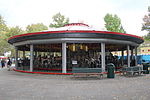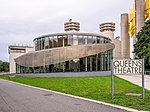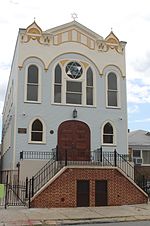Queens Zoo
1964 New York World's Fair1968 establishments in New York CityEntertainment venues in Queens, New YorkFlushing, QueensFlushing Meadows–Corona Park ... and 6 more
Robert Moses projectsTourist attractions in Queens, New YorkUse mdy dates from May 2019Wildlife Conservation SocietyZoos established in 1968Zoos in New York City

The Queens Zoo is an 18-acre (7.3 ha) zoo located in Flushing Meadows–Corona Park in Queens, New York City. The zoo is part of an integrated system of four zoos and one aquarium managed by the Wildlife Conservation Society in partnership with the New York City Department of Parks and Recreation, and is accredited by the Association of Zoos and Aquariums (AZA).
Excerpt from the Wikipedia article Queens Zoo (License: CC BY-SA 3.0, Authors, Images).Queens Zoo
United Nations Avenue North, New York Queens
Geographical coordinates (GPS) Address External links Nearby Places Show on map
Geographical coordinates (GPS)
| Latitude | Longitude |
|---|---|
| N 40.74374 ° | E -73.848592 ° |
Address
Queens Zoo
United Nations Avenue North
11368 New York, Queens
New York, United States
Open on Google Maps











